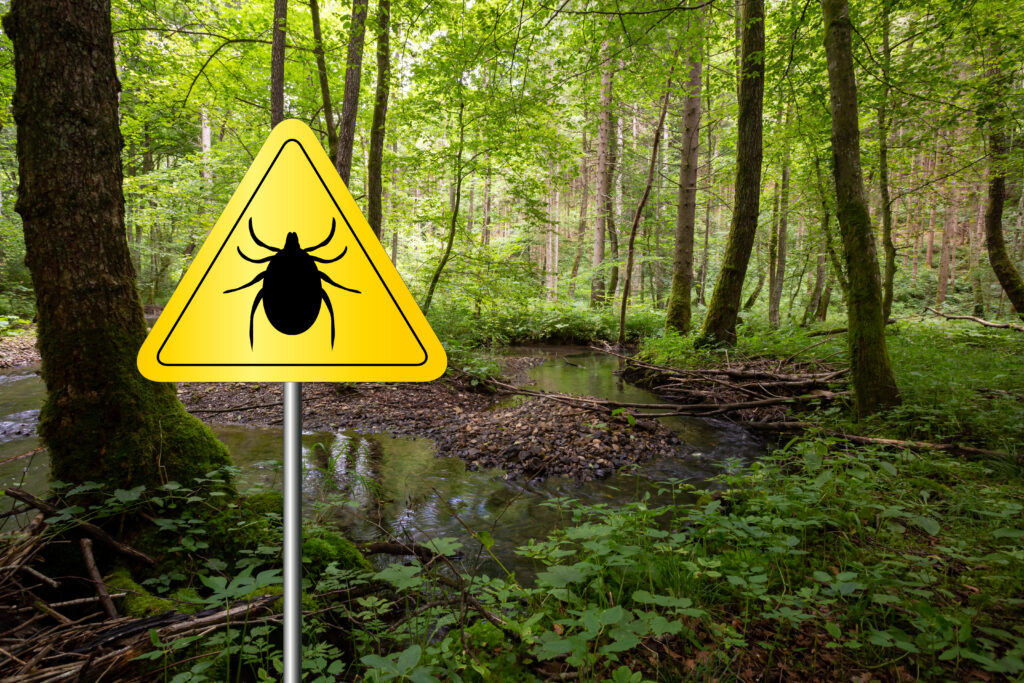Summer means we are spending a lot more time outdoors, enjoying hikes, playgrounds, picnics and campfires. Though I love that kids experience all of these activities, I caution that parents and kids alike be mindful of ticks.
Lyme disease, transmitted by deer ticks to humans, is an infection caused by a bacteria, most often the bacterium Borrelia burgdorferi. Named after the town of Lyme, Connecticut, the infection is very common in children, particularly those between the ages of 5 and 9. Lyme disease can be a serious illness, but most of the time, children have only mild symptoms and can often be treated with an antibiotic.
Here is what I want you to know about Lyme disease:
The most common symptom of Lyme disease is a distinctive red rash that looks like a target or bull’s eye. The medical name for the rash is erythema migrains. Approximately 80% of people who have Lyme disease will develop this rash. The rash has a red center, usually where the tick bit. Around the red center, there is a clear patch of skin. Surrounding that clear patch is another red circle. The rash usually is slightly raised. You may not see the rash until a week or two after the tick bite.
Some children will develop additional symptoms of Lyme disease, such as fatigue, headache, muscle aches, joint pain and enlarged lymph nodes. These symptoms can start within a few weeks of a tick bite.
Children rarely but do occasionally develop more severe symptoms of Lyme disease, including numbness in the arms or legs (neuropathy), heart inflammation, musculoskeletal problems, kidney and/or liver problems, arthritis or Bell’s palsy. However, any of these symptoms could be connected to a different health condition, so if you have any concerns about your child’s health, reach out to your pediatrician.
If you see a tick on your child’s skin, remove it right away. Use a pair of clean, fine tweezers and grasp the tick as close to the skin as possible. Pull straight up; do not twist and turn with the tweezers. Your child will feel a tug. If possible, put the tick in a plastic bag and talk to your doctor about whether you should bring in the tick for testing. After removing the tick, wash the area with soap and water and apply an antibiotic ointment if needed for redness or tenderness at the site of the bite.
A prophylactic course of the antibiotic doxycycline can be helpful. If the deer tick has been attached to your child’s body for at least 36 hours and it is within 72 hours of the bite, a onetime dose of doxycycline can lower the risk of developing Lyme disease. If you are not sure how long the tick has been on your child’s skin, reach out to your pediatrician to see if your child should take antibiotic prophylaxis.
Here are some tips to prevent getting bit by a tick:
• Wear protective clothing, such as long pants and long sleeves
• Try permethrin-treated clothing, which provides built-in bug protection
• Use insect repellent containing DEET on exposed skin
• Walk in the center of trails, not in the tall grass
• Keep swing sets and playground away from less maintained or wooded areas of your yard
When coming in from outside, check your child’s skin for ticks. Look from head to toe, and particularly behind the knees, belly button and inner thighs. Younger kids tend to get bit on their head and neck. Older kids tend to get bit on the arms and legs. I also recommend children take a shower after coming in from outside, particularly if they have been in areas where there might have been ticks.
Ticks can attach to clothes. If you see a tick on your child’s clothing, remove the tick and then put the clothing in a hot clothes dryer for at least six minutes to kill any other ticks that may have attached.
Fortunately, most children recover quickly from Lyme disease. If you are concerned that your child was bit by a tick and / or is showing signs of Lyme disease, reach out to your pediatrician to discuss next steps.
Laura Rusch, MD, is a board-certified pediatrician with the Mid-Atlantic Permanente Medical Group. She sees patients at the Kaiser Permanente Kensington Medical Center.

Bigstock.com/24K-Production
